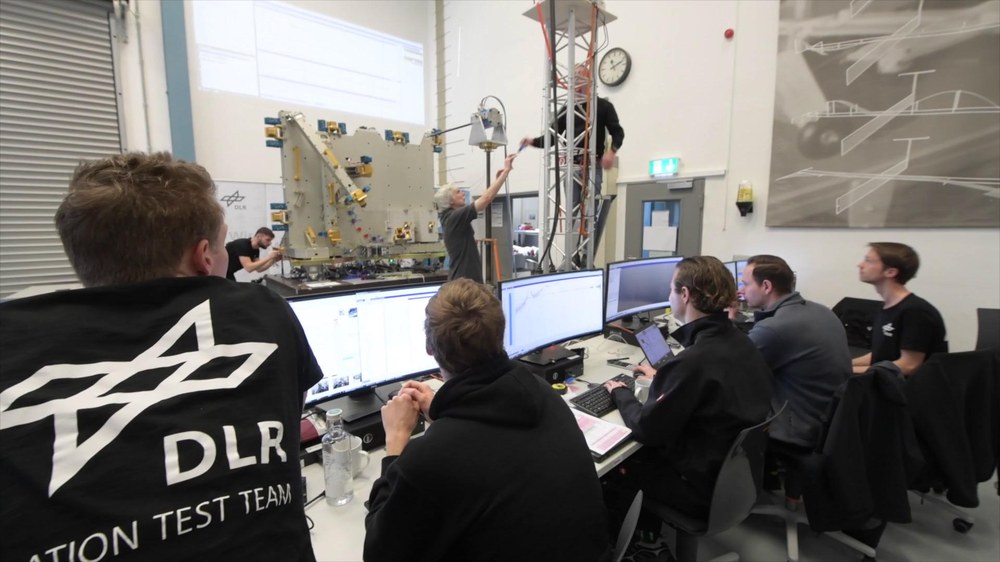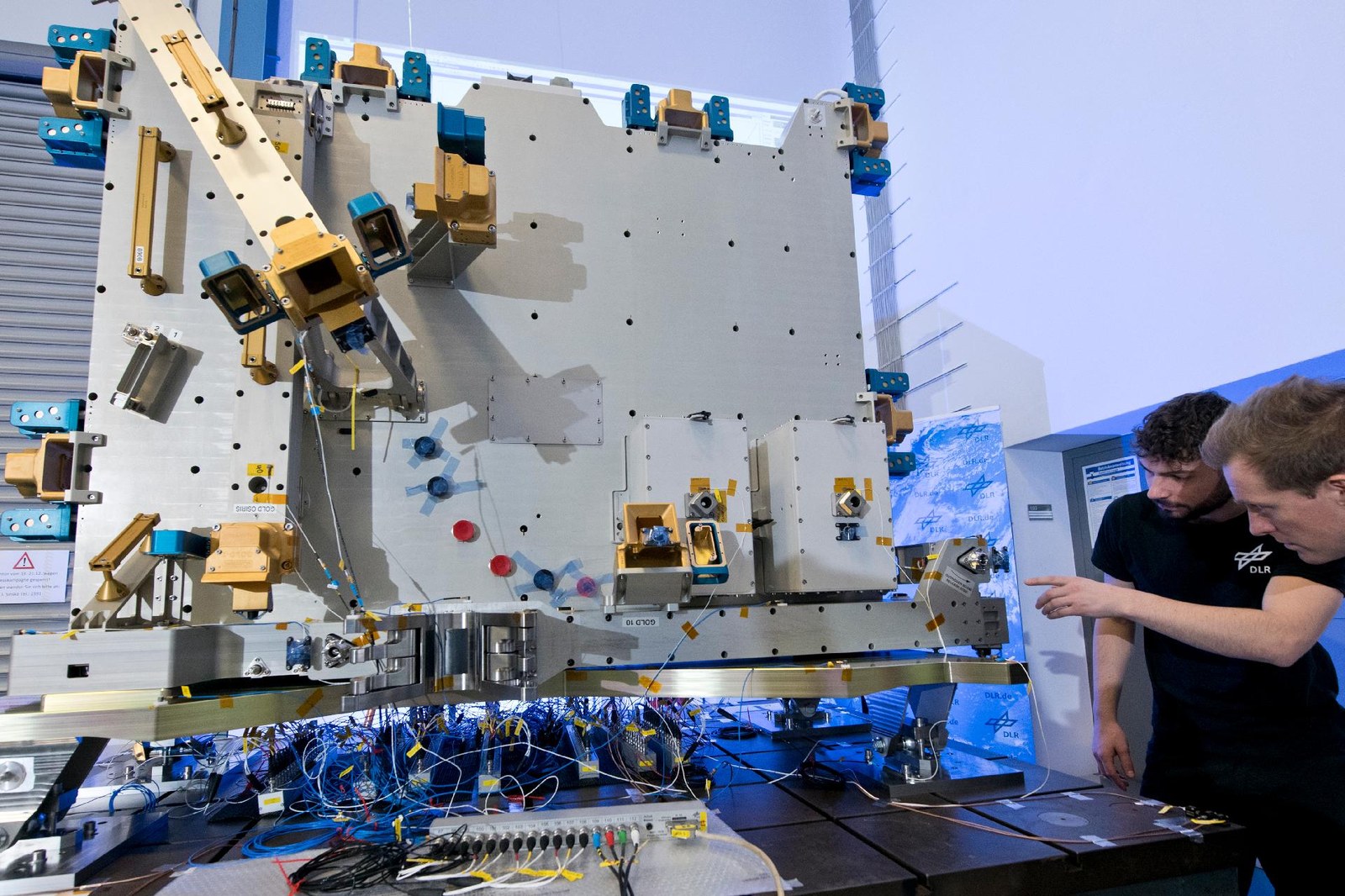DLR Göttingen tests commercial payload platform for the International Space Station
- DLR Göttingen has tested a payload platform for the International Space Station
- The Bartolomeo platform was developed by Airbus
- Commercial users will be able to conduct experiments in space more quickly and with increased cost effectiveness
The German Aerospace Center (Deutsches Zentrum für Luft- und Raumfahrt; DLR) has tested a new type of payload platform created by Airbus for the International Space Station (ISS). Researchers at DLR in Göttingen investigated the vibration behaviour of the component in order to rule out any potentially dangerous vibrations during launch or while in service.
The platform, named Bartolomeo, is currently being prepared for launch by the US space agency NASA. In March 2020, it is scheduled to be carried into space from Cape Canaveral on board a SpaceX Falcon launcher. It will then be attached to the exterior of the European Columbus Laboratory on the International Space Station (ISS).
The payload platform, which is 1.6 metres tall and 1.9 metres long, was subjected to intensive vibration tests in Göttingen. For this purpose, it was mounted on a base that is decoupled from its environment by four air cushions to prevent any disruptive vibrations – from vehicles driving past, for example. Electrodynamic shakers then set Bartolomeo vibrating. Some 120 sensors recorded the resulting accelerations and enabled the vibration behaviour of the platform to be analysed. The first evaluations were available within an hour. "For a long time, we have been using this method to study aircraft," says Julian Sinske of the DLR Institute of Aeroelasticity. The test results are extremely important for Kiyoumars Abdoly of Airbus Defence & Space: "We have to demonstrate that there will be no negative effects on the launcher or the space station." The decision as to Bartolomeo's suitability will be made by Hung Hun Nguyen of the US space agency NASA, who attended the tests in Göttingen.
Video of the test:

DLR Göttingen tests commercial payload platform for the International Space Station
Your consent to the storage of data ('cookies') is required for the playback of this video on Quickchannel.com. You can view and change your current data storage settings at any time under privacy.
©DLR
Bartolomeo offers new and unique opportunities for conducting research in a space environment on the ISS. Its potential uses include radiation biology, technology testing, climate and Earth observation, astronomy, solar physics, and laser communications. The platform will make it possible for commercial users to conduct experiments in space more quickly and with increased cost effectiveness. It is designed to be operated largely without the need for astronaut intervention. A five-metre-long robotic arm allows experiments to be installed and modified by controllers on Earth. One possible application is the observation of forest fires, such as those occurred recently in Australia.
About the project
Bartolomeo was developed and financed by Airbus. As part of a European Space Agency (ESA) ISS commercialisation initiative, Airbus will operate the new platform in a public-private partnership. ESA will arrange the launch, make astronaut crew time available for its installation, and supply Columbus resources such as power and real-time data transfer for the experiments. The DLR Space Administration is involved in ESA's ISS commercialisation projects as part of its ESA programme commitment.



